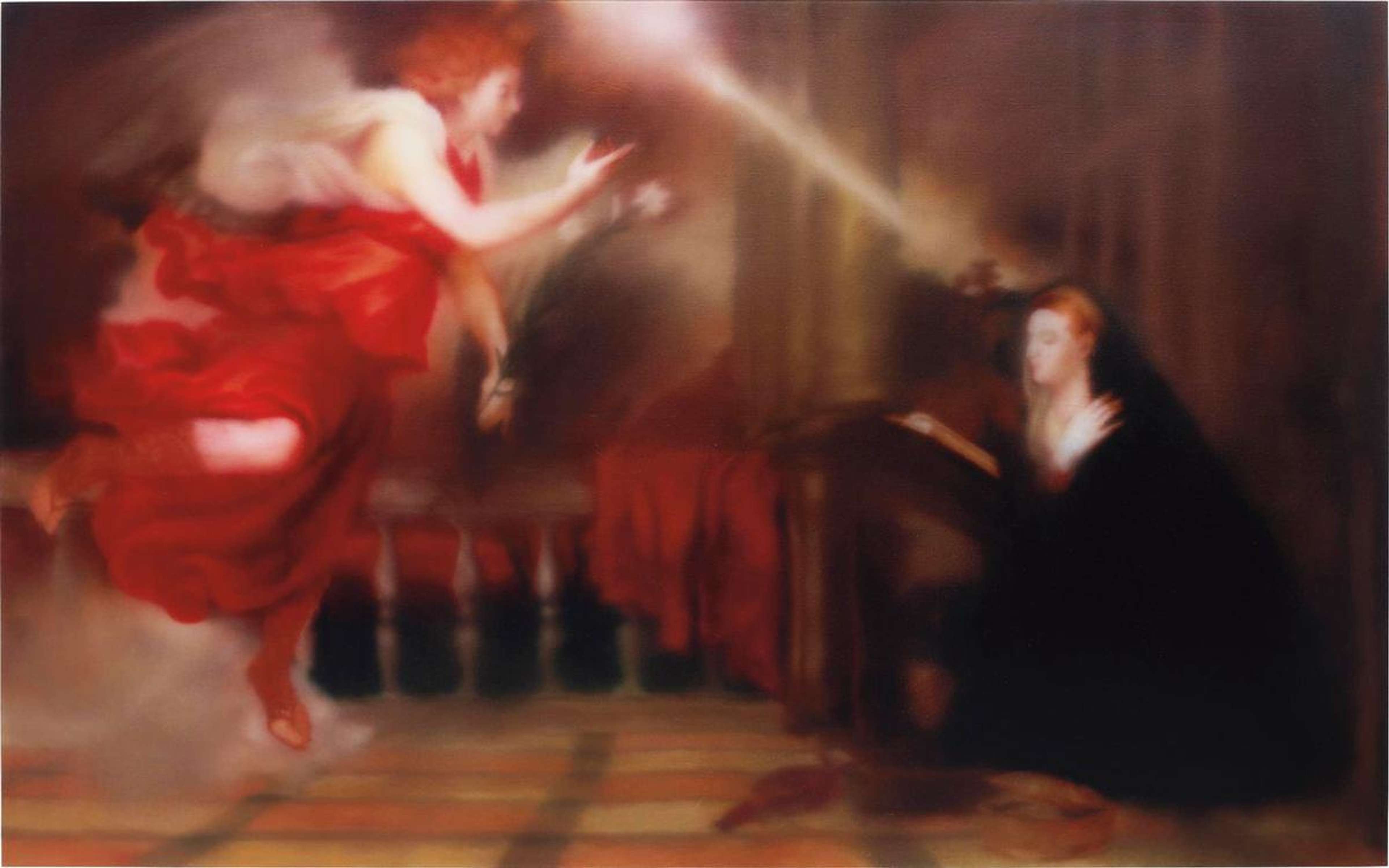
Annunciation After Titian (P12)

Annunciation After Titian (P12)
Unsigned Print
Gerhard Richter
£21,000-£30,000
$45,000-$60,000 Value Indicator
$40,000-$60,000 Value Indicator
¥200,000-¥290,000 Value Indicator
€24,000-€35,000 Value Indicator
$220,000-$320,000 Value Indicator
¥4,180,000-¥5,970,000 Value Indicator
$28,000-$40,000 Value Indicator
There aren't enough data points on this work for a comprehensive result. Please speak to a specialist by making an enquiry.
125 x 200cm, Edition of 50, Giclée print
Auction Results

Track auction value trend
Meaning & Analysis
Annunciation After Titian (P12) was issued in 2015 in an edition of 50. An unsigned print, it is the work of acclaimed German artist Gerhard Richter and belongs to the Photography collection. A standout example of the artist’s so-called ‘blur’ technique, the print is made after a painting that itself dialogues with canonical art history.
This spell-binding Richter print engages thoughtfully with a masterwork of classical painting: Titians’ Annunciation, painted in around 1539. Housed at Venice’s Scuola Grande di San Rocco - a large building in the northern Italian city famed for housing a large number of works by Venetian painter Tintoretto, who was once the apprentice of Titian himself - the Annunciation is one of the most famous works of Renaissance art in existence. This particular print is not just a copy of Titian’s masterpiece, however; rather, it is one in a series of 5 paintings depicting the same subject matter, each of which, when viewed in sequence, becomes more and more ‘blurred’. This ‘blurring’ operates as if to mimic a staged conceptual retreat from not only the referentiality of the original painting, but from the original’s relationship to Christian theology. A standout example of Richter’s ‘blur’ technique, Annunciation After Titian (P12) speaks to Richter’s complicated relationship to art historical past and present.
Richter has cited his practice of ‘blurring’ as an attempt to create ‘technological’ images devoid of any overly prominent or distracting elements. Blurring is also an expression of Richter’s close relationship to photography. The basis of Richter’s many photorealist paintings, such as the internationally recognisable Betty (1991), is what the artist names his Atlas: a huge collection of found images, newspaper cuttings, and family photographs, that references the work of prominent art historian Aby Warburg and his Mnemosyne Atlas -: a large-scale study of art consisting of 40 panels, onto which were affixed around 1,000 images from newspapers, magazines, and books. This large-scale ‘atlas’ was arranged thematically in as diverse categories as ‘coordinates of memory’, ‘vehicles of tradition’ and ‘archaeological models’. In his own Atlas, Richter constructs a similar string of images that also refer to historical events, such as the rise of Mao in China and the Holocaust, as well as key moments in his personal life.